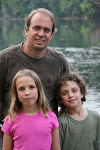From Julie Dunlap:
Maps captivate Rick Van Noy. Delaware River maps, labeled with depths of channels and classes of rapids, opened his teenage world to canoeing adventures. Mapmakers became the focus of his scholarly work in literary criticism—investigations of Thoreau and other writers who create maps, and of cartographers, such as John Wesley Powell, who write about the landscapes they chart. Van Noy’s understanding of how both types of mapmakers struggle to convey their intimate connections with particular environments is revealed in his first book, Surveying the Interior: Literary Cartographers and the Sense of Place.
Now a young father, Van Noy finds new meanings in maps. Surveying the fresh terrain of parenthood, he discovers that today’s children risk getting lost on their home ground. Tethered inside by game systems, YouTube, and parental anxieties, kids learn little and care less about the wild creatures and unmown places outside their doors. The causes and perils of youthful alienation from nature have been elucidated by Richard Louv in his celebrated Last Child in the Woods: Saving Our Children from Nature-Deficit Disorder (Algonquin, 2005). Van Noy’s book serves a different purpose. As he puts it, “... I leave the diagnosis for others, focusing instead on the prospects for recovery, on what can happen when kids are allowed to naturally play.”
A Natural Sense of Wonder begins in fall, with a quiet essay about walking to school. Readers get to know Sam, age 7, Elliott, age 5, and their suburban Virginia neighborhood, from the chinquapin tree on Seventh Street to a starling flock on Eleventh. Along the way, Van Noy points out lessons in ecology, history, health, and family that his children are gaining while their peers commute to class in cars. Drivers in the drop-off lines may think the Van Noys’ walks quaint, but the author insists that developing human brains need direct experience of the colors, textures, and smells of their surroundings. Reconnecting kids with place, he argues, is not optional, “It’s about survival.”
The family ventures farther as the seasons progress, though not with unalloyed enthusiasm. The kids sometimes balk at early departures, and their mom mutinies on a protracted canoe trip. Wrong turns and forgotten tents make Van Noy himself question the intent of their forays. Such hesitations and missteps enhance the book’s accessibility to other parents, and practical tips add to its usefulness. Take toys along, for example, when you lead children to the creek; they’ll forget about the Wii back home as Barbie bobs down the rapids. Removing yard fences is another key, for barriers designed to keep children safe too often block them from getting wet and dirty. “The only way to experience the world around you,” says Van Noy, “is to jump in.”
An English professor, the author refers to Thoreau, Dillard, and other writers as signposts along his way. Eventually the path carries his family to the Maine coast where Rachel Carson once explored. Where Sam and Elliott splash in tidepools, Carson collected periwinkles for her nephew, Roger. Such intimate adventures, says Van Noy, put “maps in their heads, of not only where they are but what inhabits that landscape.” If only all children would be taken outdoors, to wriggle their toes underwater and get to know the sky above home. “They would feel like full participants of the landscapes they inhabit,” he writes, “happily roaming the ridges and creeks in a world that needs their attentiveness.” Van Noy does more than share Carson’s hope that every child be granted an indestructible sense of wonder that lasts a lifetime. He is doing his best to make sure it happens.
Freelance writer Julie Dunlap lives in Columbia, Maryland, and writes about environmental history and environmental education.
Friday, February 13, 2009
Subscribe to:
Post Comments (Atom)

No comments:
Post a Comment